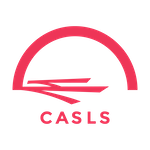K-16 Chinese Dual Immersion Research
- Level: Elementary school, middle school, high school, and university
- Language: Chinese
- Download the full report: Part 1 and Part 2
For two decades, Portland Public Schools (PPS) in Oregon has offered a Mandarin Dual Language Immersion Program. Students can begin the program in preschool or kindergarten. For the last decade, PPS has partnered with the University of Oregon to build a well-articulated K–16 Mandarin program.
Our ethnography study, funded by The Language Flagship, examines the historical development of the PPS program, identifies elements of the PPS model that other districts can replicate, and examines catalysts and disruptors to the language immersion model.
Historical Development of the Program
In the late 1990s, PPS responded to parent and educator interest in offering a Chinese immersion program. The PPS Mandarin Dual Immersion Program opened in September 1998. PPS selected Woodstock Elementary School to host the immersion program in an effort to boost the school’s declining enrollments. Today, enrollment in the elementary immersion program has doubled, and the school receives more applications than spots available. The program expanded to Hosford Middle School in 2003 and Cleveland High School in 2006. The district added a second site at King School, which will expand to a nearby middle school and then to Jefferson High School in 2014.
In 2005, the National Security Education Program awarded PPS and the University of Oregon a generous grant and challenging task: to establish the nation’s first K–16 Chinese Flagship Program. The goal was to graduate students who are professionally proficient in Mandarin at the Superior level and to also provide a model for replication by other schools.
The first cohort of PPS alumni graduated in 2006, and many of them have continued their language study at the University of Oregon. To date, thirty-six PPS graduates have been accepted in the UO Chinese Flagship Program.
PPS Model
The PPS Mandarin Dual Immersion Program is based on three prongs: content-based instruction, direct language instruction, and experiential learning. Fifty percent of class time is conducted in Mandarin in grades K–5, 33 percent in grades 6–8, and 20 percent in grades 9–12.
Students in the eighth grade prepare an inquiry-based project on a topic of their choice. They spend two weeks in China completing their research. During that time, students live with local families and take cultural classes.
High school students may complete a biennial summer program with the Yunnan Summer Institute in China. The institute is a one-month community service program. As part of the institute, students also travel to historical sites while living with local families.
Facilitative Approach to Developing an Immersion Program
Our research identified twelve essential elements for an immersion program.
- Foster community support through clear, consistent communication with parents.
- Facilitate communication among parents and teachers, specifically addressing differences in language, culture, and socioeconomic status.
- Garner district support for staffing, curriculum, enrollment, student management, and financial investments.
- Create unity between the immersion and neighborhood programs housed within the same school.
- Develop institutional partnerships to create places for students to continue their learning as they progress from elementary to middle to high school and beyond.
- Maintain high elementary enrollments that can sustain attrition and retain viable student numbers for middle and high school programs.
- Maintain middle school and high school student interest and motivation in language study through innovation and opportunity.
- Employ backwards design to first identify program goals and then establish practices to accomplish those goals.
- Hire committed administrative staff whose tasks pertain solely to the immersion program.
- Provide qualified teachers with ongoing professional development through professional learning communities that work toward aligning curriculum horizontally across disciplines and vertically across grade levels.
- Track student outcomes with standardized assessments and use assessment data to drive curriculum changes.
- Consistently acquire curriculum resources in the target language.
Catalysts and Disruptors
Language immersion has the potential to address educational disparities often created by socioeconomic status. If students are given the same amount of instructional time and intensity, the achievement gap in languages disappears—hinting that the “achievement gap” is more of an opportunity gap instead.
To address the opportunity gap within the district, PPS added an additional Mandarin Dual Language Immersion Program at King School in 2014. One hundred percent of King’s students are eligible for the free or reduced lunch program. King School’s student population is also more diverse than other schools in the district: 43 percent are African American, 29 percent are Hispanic, 1 percent are Asian, 13 percent are other, and 14 percent are non-Hispanic white.
The Language Flagship, a federally funded national initiative that seeks to change the way Americans learn languages, has been a powerful disruptive innovation. Flagship’s investment has turned the nation’s focus toward outcomes-based foreign language learning. Flagship has provided important opportunities for assessment, data-driven curriculum revisions, and ongoing professional development. In addition, they have strengthened connections between K–12 and postsecondary institutions, thereby creating articulated sequences of language learning.
